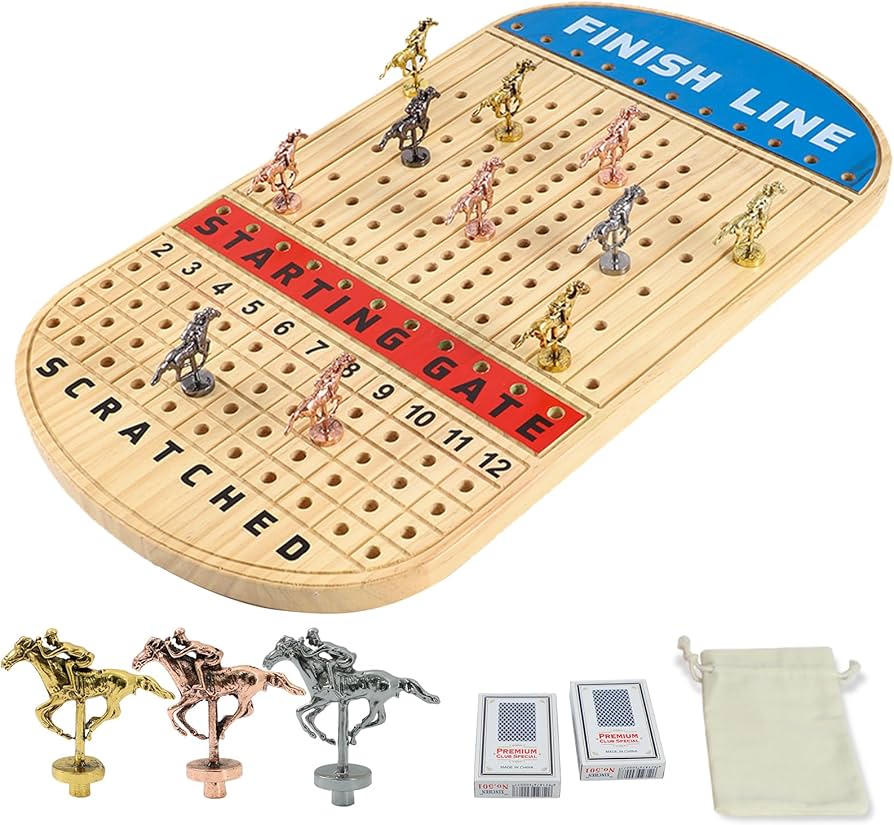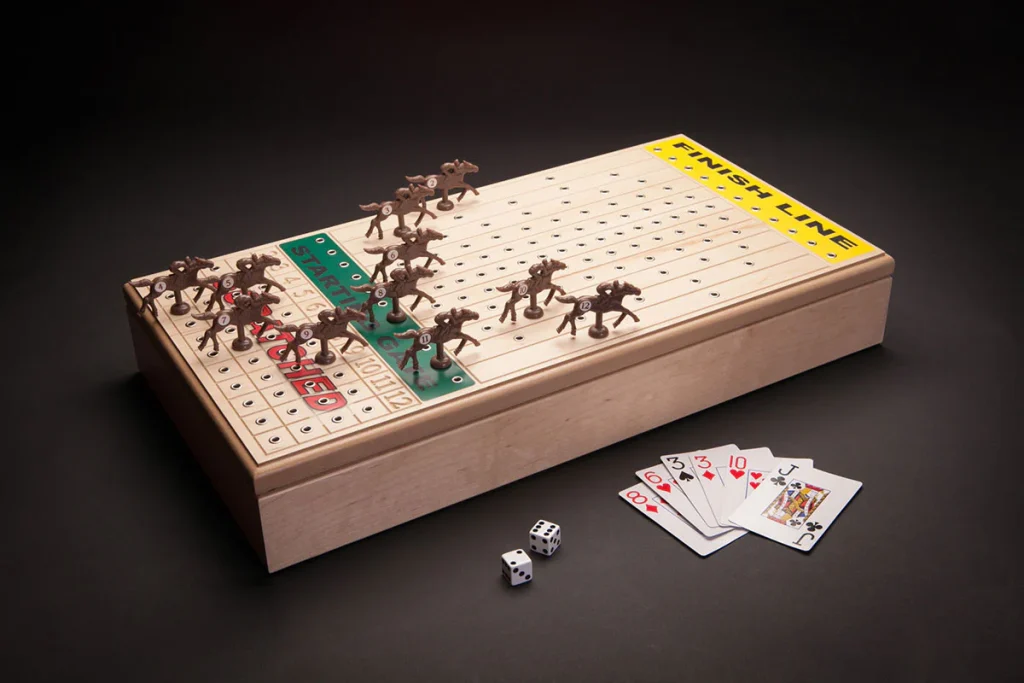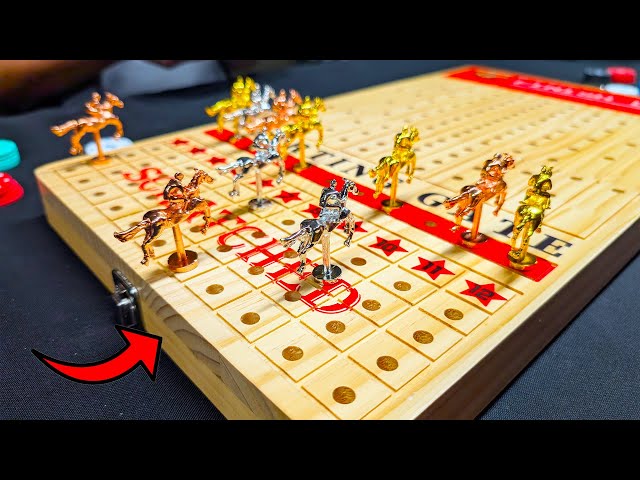Introduction
Something is electrifying about the thundering hooves of racehorses sprinting toward the finish line, the crowd roaring with anticipation, and the intense strategy behind each move. While most people associate horse racing with live events at iconic tracks or digital betting platforms, there’s a charming and immersive version of the sport that has quietly maintained its popularity for decades—horse racing board games using cards and dice. These games bring the competitive spirit and strategic fun of the racetrack right into your living room. Combining the elements of chance, suspense, and decision-making, horse racing card, and dice games are an engaging activity for family game nights, parties, or casual weekends with friends.
The Origins And Evolution Of Horse Racing Games
Horse racing board games have been around for generations, dating back to simpler times when families gathered around a table rather than a television screen. The core idea behind these games is straightforward—simulate a horse race using representative tokens, cards, and dice. Over time, the gameplay evolved, incorporating more sophisticated rules, betting mechanics, and realistic horse movement simulations. Classic titles like “Win, Place & Show” and “Royal Turf” added layers of complexity while maintaining the fundamental principles of movement and chance.
The beauty of these games lies in their simplicity. With just a deck of cards and a few dice, you can recreate the excitement of a real horse race, complete with unexpected turns, thrilling comebacks, and photo finishes. It’s no wonder these games remain a staple for game enthusiasts who love a mix of luck and strategy.

How The Game Works: Cards, Dice, And Horses In Motion
At the heart of most horse racing games are two essential tools: cards and dice. The cards usually determine which horse is eligible to move and sometimes how far it can go, while the dice decide the movement outcome, injecting an element of unpredictability.
A token on a track represents each horse, and players take turns drawing cards or rolling dice to progress the game. For instance, a standard version of the game may include a shuffled deck with numbered cards corresponding to each horse in the race. When a player draws a card, the matching horse is moved forward a certain number of spaces, determined by a dice roll. In some versions, horses move differently depending on card suits or dice totals, creating a layered and dynamic experience.
This blend of randomness and strategy is what makes the game so engaging. Players may find themselves cheering for a horse they didn’t initially bet on, just because it’s leading the pack or pulling off an underdog comeback. There’s always a sense of suspense that keeps everyone involved from start to finish.
Betting Without The Real Money Stakes
One of the most entertaining aspects of a horse racing card, and dice games is the betting component. While it’s all for fun, placing “bets” adds a competitive edge and heightens the stakes. Players typically wager chips or tokens on the horses they believe will win, place, or show. The payout system mimics real-life horse racing, with odds and rewards calculated based on the number of players who bet on the same horse.
This mechanic introduces a strategic layer to the game. Do you bet on the crowd favorite, risking a lower payout due to shared winnings, or take a chance on a long shot for a bigger return? It’s not just about rolling the dice or drawing cards—it’s about reading the table, making predictions, and sometimes bluffing your enthusiasm to mislead opponents. Even without actual money involved, the tension and thrill of winning a bet make the game feel remarkably lifelike.
Creating Your Own Horse Racing Game At Home
One of the most significant advantages of a horse racing game that uses cards and dice is its ease of setup. You don’t need a professionally produced board game to enjoy the fun. With a bit of creativity, you can craft your version using items already lying around your house. A standard deck of cards, a couple of dice, some tokens, and a paper or cardboard racetrack are all you need.
Assign each horse a number or suit from the deck and use small objects (like coins, figurines, or colored buttons) as horse markers. Sketch a simple track on a poster board or even print one from online templates. Then, establish rules for movement perhaps each horse moves forward the number rolled on the die whenever its card is drawn, or maybe different dice represent different tracks (muddy, dry, uphill). You can even spice it up by naming the horses and creating a backstory for each, giving them personalities and fictional histories to enrich the narrative.

Variations And House Rules: Keeping It Fresh
One of the most appealing features of these games is their adaptability. You can modify the rules to suit different age groups, skill levels, or desired game lengths. For younger players, remove the betting system entirely and focus on race mechanics. For adults, introduce house rules such as “double down” bets, wildcard moves, or obstacles on the track that affect horse’s progress.
Some players add “jockey abilities” that give each horse unique skills, like the ability to re-roll a die once per race or to move an extra space under certain conditions. Others add event cards that change the race environment—rain slows everyone down, a false start resets the leaders, or a lucky charm gives one horse a temporary boost.
These customizations make every game unique. No two races are the same, which keeps players engaged and encourages creativity in designing new mechanics. Over time, your group may develop a unique version of the game that becomes a cherished tradition.
Bringing People Together: Social Aspects Of Horse Racing Games
While the gameplay is entertaining, the real magic of horse racing, card, and dice games lies in their ability to bring people together. They’re inherently social games, filled with moments of laughter, light-hearted trash talk, and collective suspense. The unpredictability keeps all players engaged, even those not currently taking a turn.
These games are perfect icebreakers at parties and can serve as an entertaining centerpiece for themed events, such as derby parties or retro game nights. Their inclusive nature allows for large groups, and the simplicity of the rules means new players can jump in with minimal explanation. It’s an excellent way to connect across generations, as grandparents can easily teach the game to grandchildren, creating shared memories that span lifetimes.
Educational Benefits In Disguise
It may not be evident at first glance, but horse racing games that use cards and dice offer several cognitive and educational benefits. Children who play these games often develop skills in counting, probability, decision-making, and critical thinking. They’re exposed to basic mathematical concepts like odds and expected value without even realizing it. Adults can also appreciate the logical thinking and strategic planning involved, especially when it comes to betting and predicting outcomes.
In a classroom or educational setting, these games can be adapted to reinforce lessons in math and logic. Teachers can use them as a fun way to teach concepts like permutations, statistics, and risk assessment. It’s an engaging tool that promotes learning through play, arguably the most effective form of learning.
Nostalgia And Modern Revival
For many people, horse racing, dice, and card games evoke a sense of nostalgia. Perhaps they remember playing with their grandparents or during family holidays. That feeling of anticipation as you roll the dice and hope for your horse to surge ahead is timeless. It’s this emotional connection that has helped the game endure across decades, even as newer, flashier board games enter the market.
Interestingly, there has been a recent revival of interest in vintage-style tabletop games, and horse racing titles are benefiting from this trend. Game publishers are re-releasing classic versions, while independent creators are designing modern twists with enhanced visuals, expanded rules, and digital integrations. Some even pair physical components with mobile apps to track stats and odds dynamically.
This fusion of old and new has helped the genre remain relevant, appealing to both older fans and younger generations seeking something different from the usual video games or phone apps.
Collectibility And Themed Editions
Another appealing feature of horse racing board games is their collectible nature. Enthusiasts often seek out rare or vintage editions, each with its artwork, track designs, and unique rulesets. Some limited-edition versions are themed after famous races, such as the Kentucky Derby or Preakness Stakes, featuring official branding and replicas of real-world horses and jockeys.
There are also novelty editions created for events or companies, making them fun collector’s items. These games can become prized possessions, passed down through families or displayed proudly among board game collections. The rich history and variety within the genre offer something for everyone, from casual players to serious collectors.

Conclusion
In a world saturated with digital entertainment, the horse racing game with cards and dice is a refreshing reminder that sometimes the simplest forms of fun are the most enduring. Whether you’re a competitive strategist, a casual player, or a nostalgic soul longing for simpler times, this game offers a perfect blend of excitement, unpredictability, and camaraderie.
Its adaptability, ease of setup, and ability to bring people together make it more than just a game—it becomes an experience, a memory-maker, and a cherished tradition. So gather your friends, shuffle that deck, roll the dice, and let the race begin. The track is set, the horses are ready, and the fun is guaranteed.

